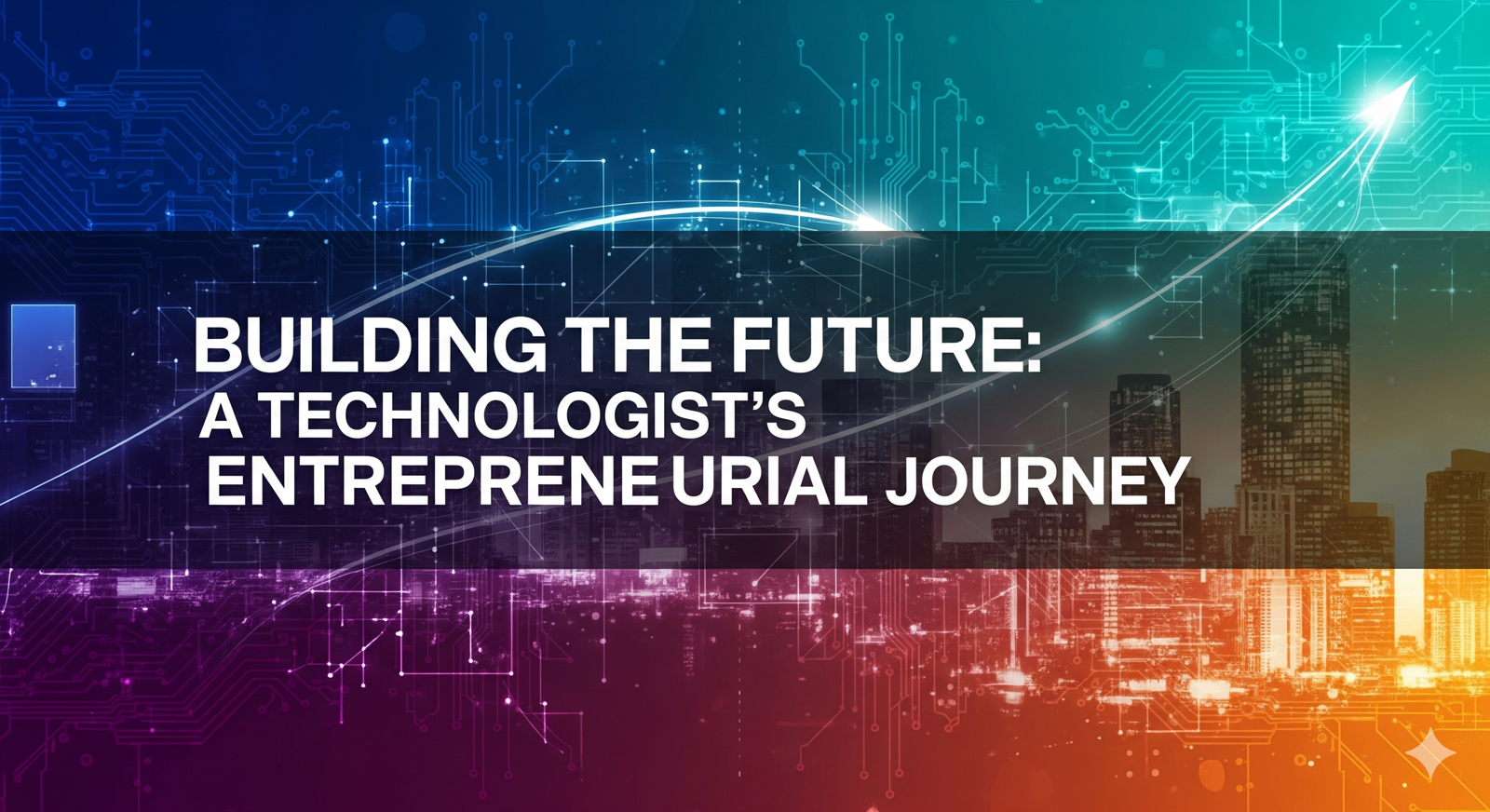
The most powerful innovations of our time aren’t born in boardrooms. They’re sparked in the quiet hum of a server at 2 AM, sketched on a napkin, and built line by line by those who see the world not for what it is, but for what it could be. This is the story of that journey. It’s a path walked by a unique breed of visionaries: the technologist-entrepreneur.
This isn't a career. It's a calling. It’s a relentless pursuit that starts with a single, powerful question: "What if?"
The Engine: A Passion for Technology
For the true technologist, code is more than a language; it’s a toolkit for creation. It begins with a deep-seated curiosity—a need to understand how things work, to deconstruct complex systems, and to solve intricate puzzles. This passion is the engine of the entire journey.
It’s the thrill of seeing an algorithm execute flawlessly, the satisfaction of architecting an elegant solution to a messy problem, and the belief that technology is the most potent lever we have to move the world. This foundational love for building is non-negotiable. It’s the fuel that powers through the inevitable bugs, setbacks, and moments of doubt.
The Shift: From Builder to Visionary
Many are content with building what they’re told. The entrepreneur, however, is driven to build what they see. This is the critical pivot: the shift from a pure technologist to a technologist-entrepreneur.
It’s the moment a solution to a technical problem reveals a solution to a human problem. The vision expands from the elegance of the code to the impact of the product. Questions evolve:
From: "What's the most efficient framework to use?"
To: "How will this feature change our user's day for the better?"
This vision is the compass. It guides every decision, from hiring the first employee to prioritizing the product roadmap. It’s the story that gets told to early investors, the first hires, and eventually, the world.
The Blueprint: Where Code Meets Strategy
An idea, no matter how brilliant, is a ghost without a body. The entrepreneurial journey is the process of giving it one. This is where technological skill merges with business acumen to form a blueprint.
1. The Foundation: Product-Market Fit
This is the first real-world test. It’s a humbling and iterative process of building, measuring, and learning. The technologist must now wear the hats of designer, market researcher, and customer service agent, all while ensuring the core technology remains scalable and robust.
2. The Framework: Building a Team
No one builds the future alone. The true test of leadership is moving from a solo coder to the architect of a team. It’s about finding people who are not only smarter than you in their domains but who also share the core vision and passion. You stop building a product and start building a culture.
3. The Architecture: Sustainable Growth
A beautiful product with no business model is a hobby. The entrepreneurial technologist learns to balance the art of creation with the science of business—crafting a model where value creation and value capture go hand-in-hand. This ensures the vision can survive and thrive in the real world.
The Launch: Embracing the Iterative Process
The journey is never a straight line. It’s a series of launches, iterations, and sometimes, course corrections. Failure isn’t an endpoint; it’s a data point. A buggy release, a rejected pitch, a feature users ignore—each is a lesson that sharpens the vision and strengthens the resolve.
The ethos of the developer—build, test, debug, iterate—becomes the ethos of the entire company.
The Future, Under Construction
To be a technologist and an entrepreneur is to live in a state of perpetual becoming. It is to stand with one foot in the tangible world of logic and code and the other in the aspirational world of markets and possibilities.
It’s a challenging, often exhausting, journey. But for those who are built for it, there is no other path. Because the greatest reward is not an exit or a headline; it is the quiet knowledge that you took an idea from a spark in your mind and turned it into something real. You shipped code that became a product, built a team that became a family, and solved a problem that became a legacy.
You are not just writing code. You are building the future.
Write a comment ...